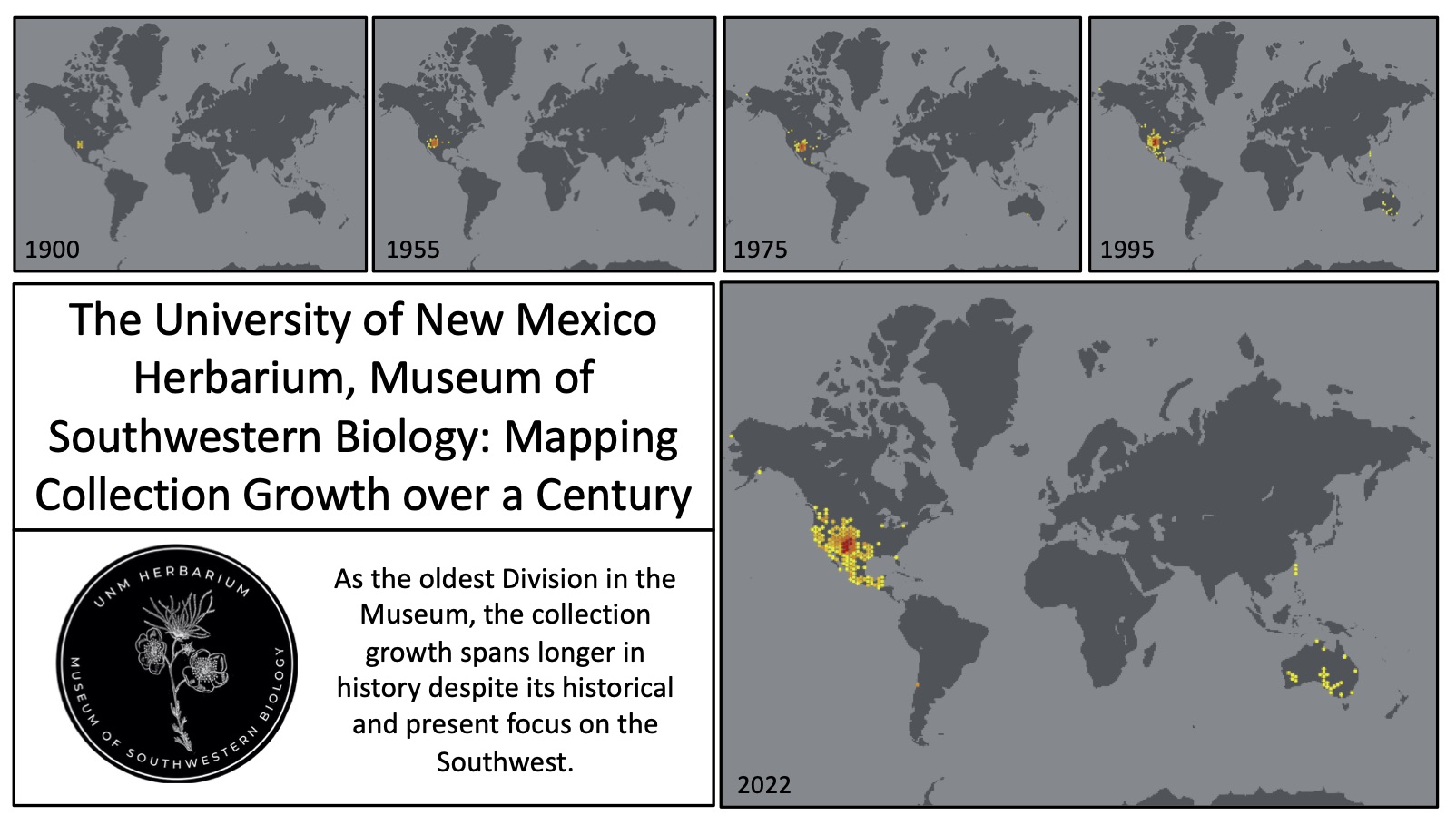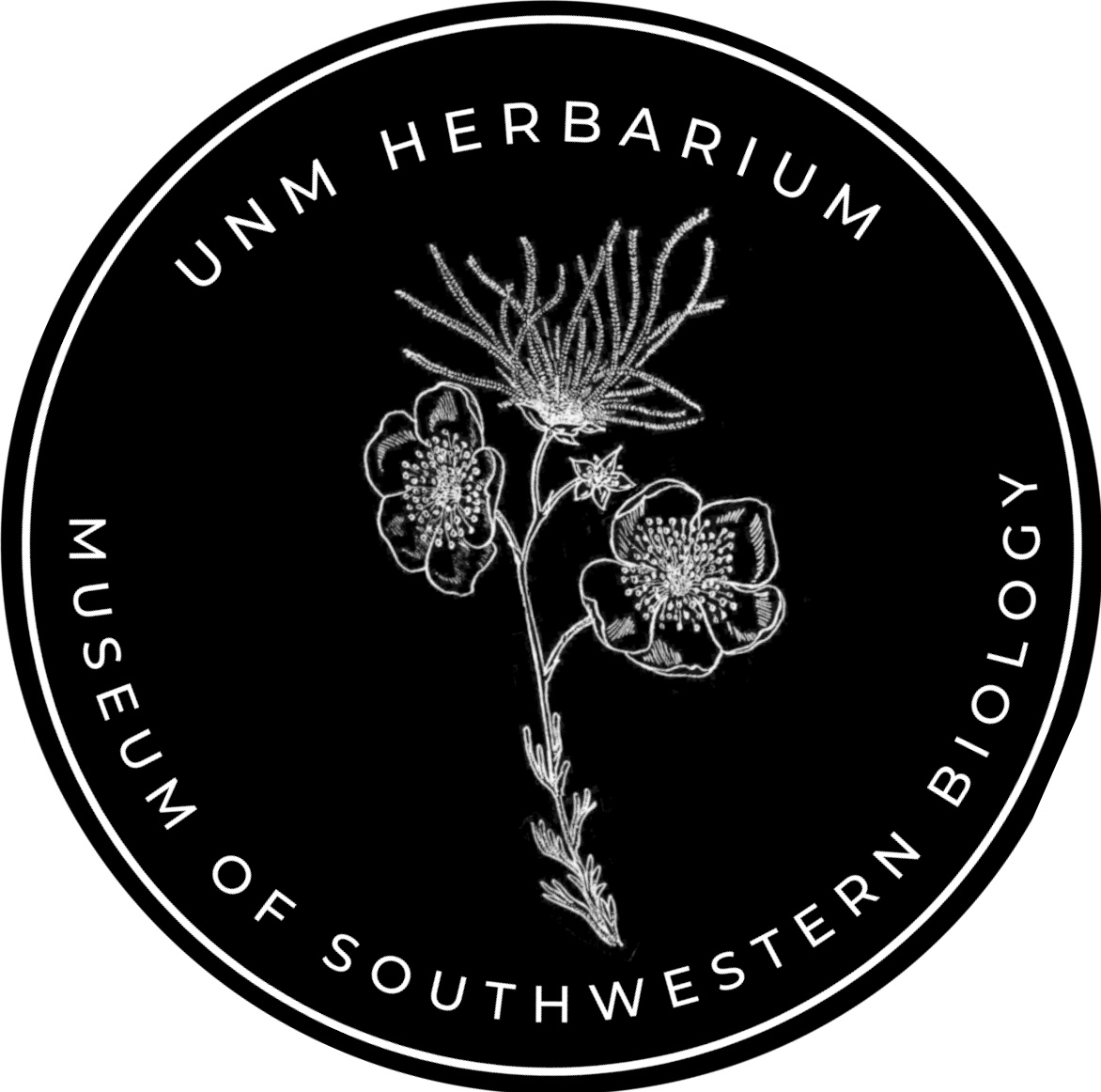Scope
Scope of the Collection
Geographic Distribution
The herbarium houses specimens from 23 countries with sizable holdings from the United States, largely from the southwest, and Mexico.
Taxonomic Representation
Our holdings include 268 families, 1,871 genera, 7,618 species, and 9,932 total taxa including subspecies and varieties. Our largest family holdings are of Amaranthaceae, Asteraceae, Brassicaceae, Cactaceae, Cyperaceae, Euphorbiaceae, Lamiaceae, Orobanchaceae and Plantaginaceae.
Temporal Range
Our collection includes our oldest specimens collected in the early 1880s all the way to today where we have recently infused an active collecting program.
Type Specimen Holdings
The majority of our collections are of dried vascular plant specimens that are mounted. We also have a significant collection of cacti and cones in boxes. Our bryophyte, lichen and fungal collections are prepared in specimen packets and archival boxes, and while smaller, are still active.
Type Specimens
The Type Collection in our herbarium houses 200 specimens primarily collection from New Mexico. These include 35 holotypes, 116 isotypes, 34 paratypes, six syntypes, and eight specimens characterized as neotypes or lectotypes. Taxonomic strengths of the Type Collection include Cactaceae (43 specimens) and Asteraceae (24 specimens). The oldest type in our collection, an isotype for Heuchera wootonii, was collected by Elmer Wooton in 1897 in the White Mountains of Lincoln County. Our types collection also houses an isotype for Tetramolopium mitiaroense, our only specimen from the Cook Islands!
Fieldnotes
The herbarium has a small archive of collector notes from notable collectors including Charlotte Elis, Ora Clark, Edward Castetter, Danella Roth, and Robert Sivinski.
Growth
Our collection on average grows by about 1,800 specimens every year, with ebbs and flows based on personnel. We are currently in 2022 on a big growth spurt and hope it continues to rise.
Loans
On average the herbarium sends out 25 loans to researchers each year, not including in house destructive sampling for dna analysis.
Publications Citing MSB Mammal Specimens
From 1921-2021 the herbarium has been cited in technical reports, surveys, theses, dissertations, and peer reviewed publications on average 7 times per year.
Visitors
The herbarium welcomes on average 231 visitors per year, which does not include the numerous tours we give to large groups.
Spatial and Temporal Coverage




